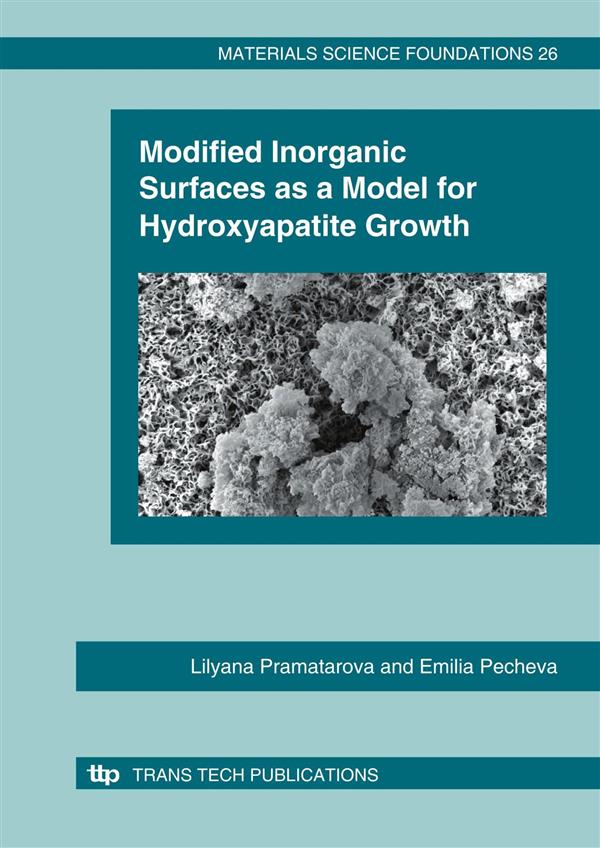Engineering Research
Materials Science
Engineering Series
Modified Inorganic Surfaces as a Model for Hydroxyapatite Growth
Description:
The results presented in this book will make a significant contribution to the application of the modified surfaces of widely-studied materials as a model system for hydroxyapatite-coating, to the cultivation of cells on surfaces, as well as to the growth of hydroxyapatite by applying new technologies (such as laser-liquid-solid interaction) that facilitate nucleation and growth. In this way, materials and layers having possible applications as implants, biosensors, etc. can be obtained. The in vitro system described here is universal and can be applied not only to the production of hydroxyapatite coatings for implants, but also to investigating the basic mechanisms of mineral-formation diseases and thus identify new directions for prophylaxis. This will then make a strong contribution to improving the quality and duration of life of the population.
Purchase this book:
Info:
Review from Ringgold Inc., ProtoView:
Pramatarova and Pecheva (both solid state physics, Bulgarian Academy of Sciences, Sofia) describe two approaches for growing hydroxyapatite layers on variously modified surfaces from super-saturated aqueous inorganic solution. Such growth can facilitate research into biomineralization as it occurs in the formation of kidney stones, atherosclerosis, and other diseases. It can also help research into designing implants such as synthetic bones and teeth.

